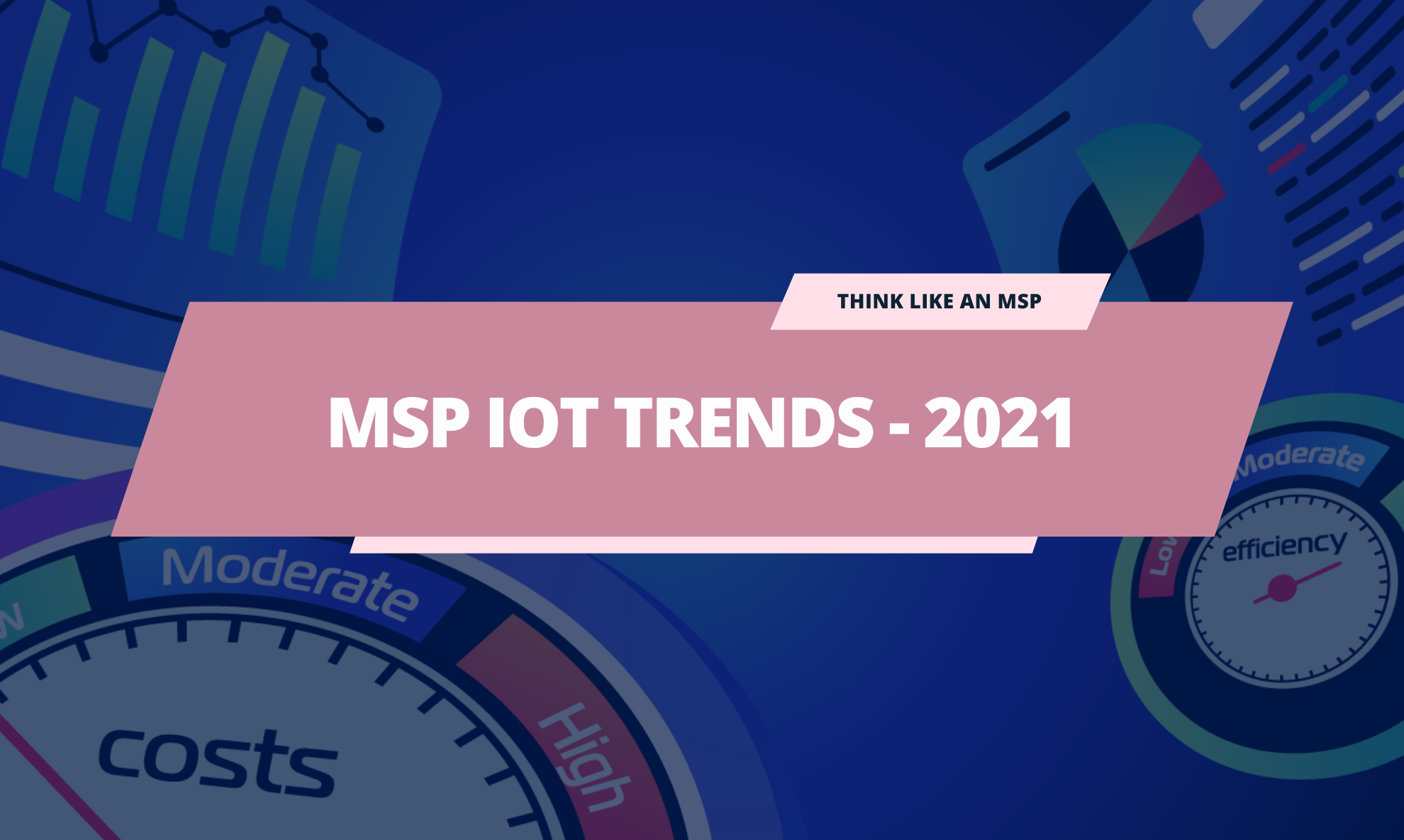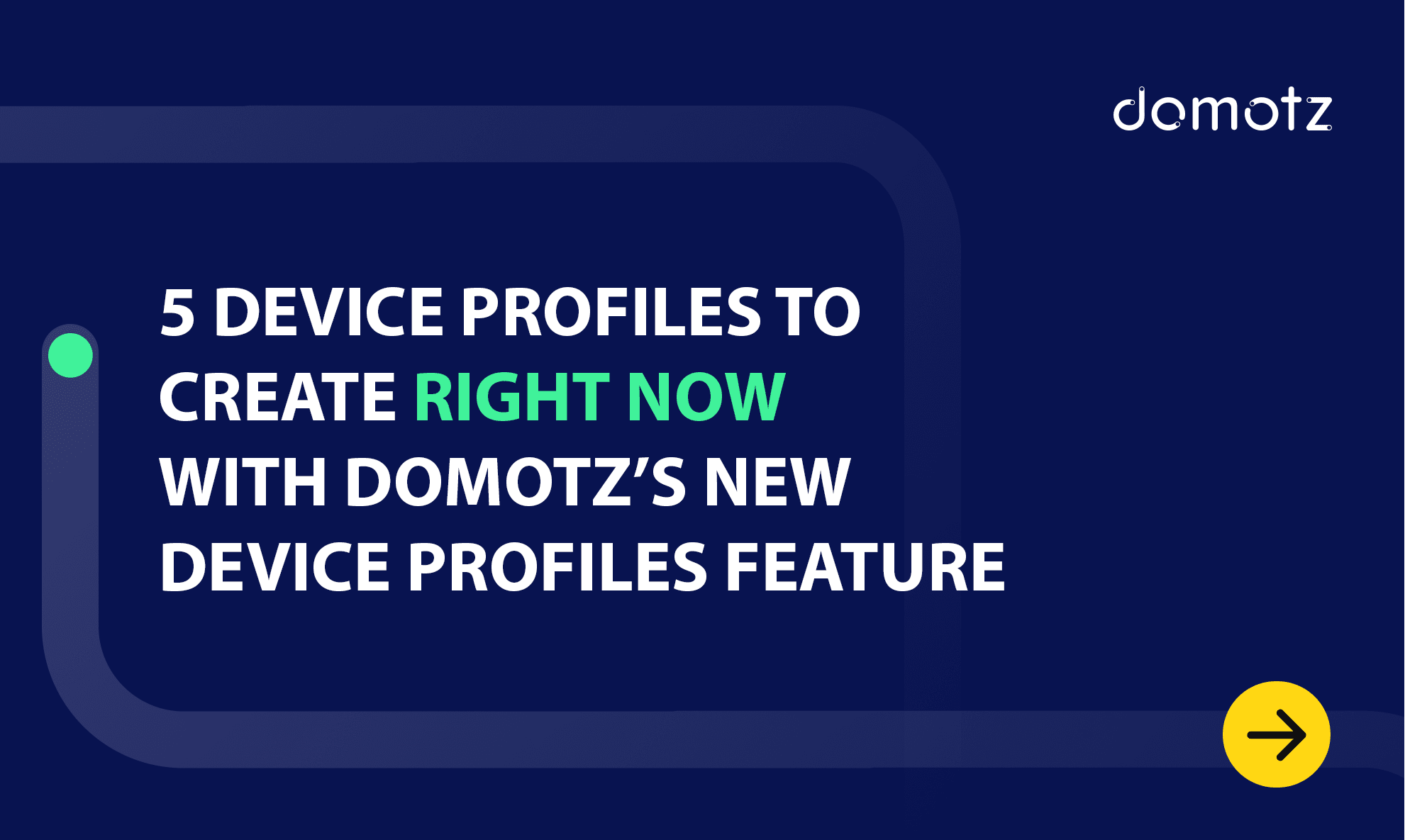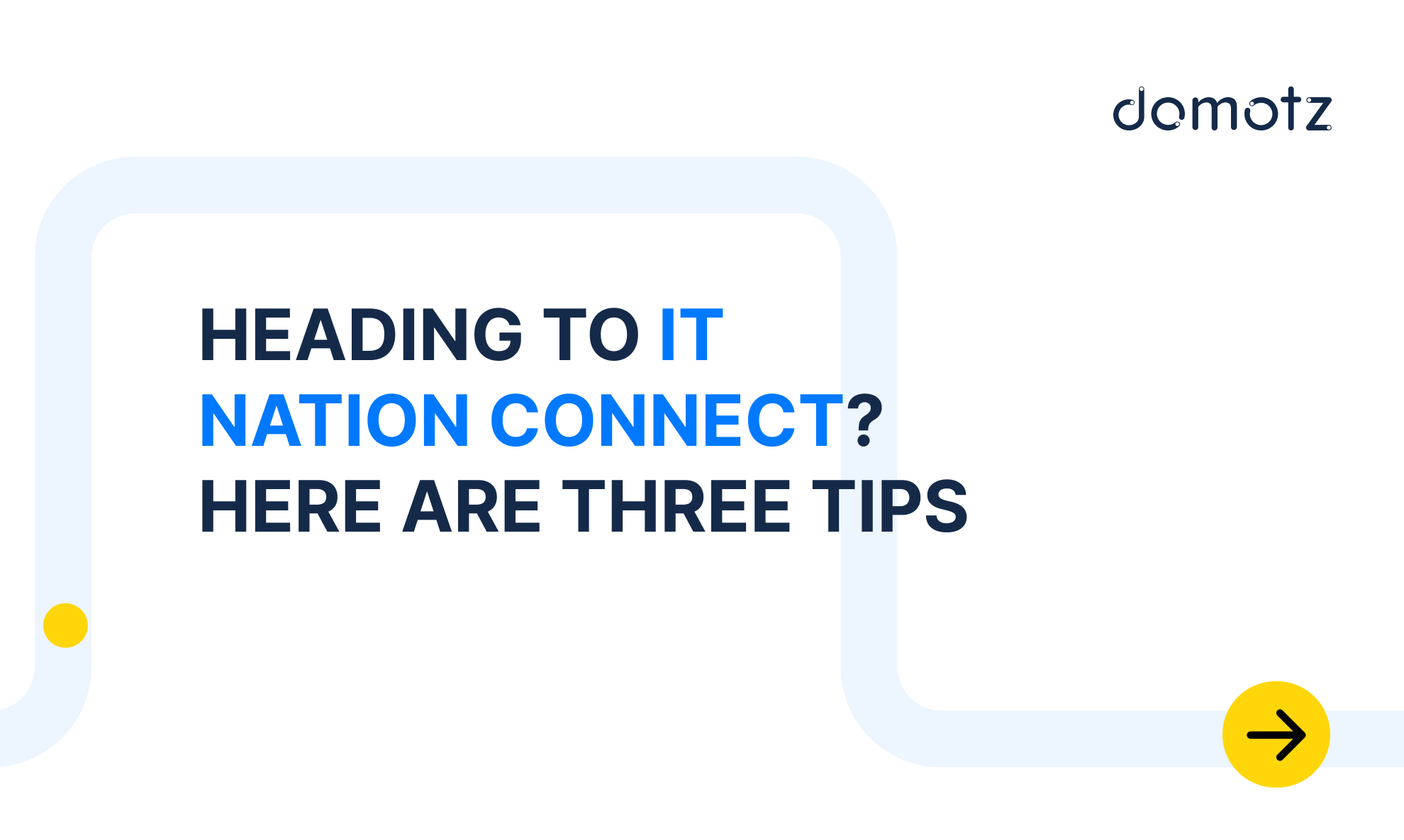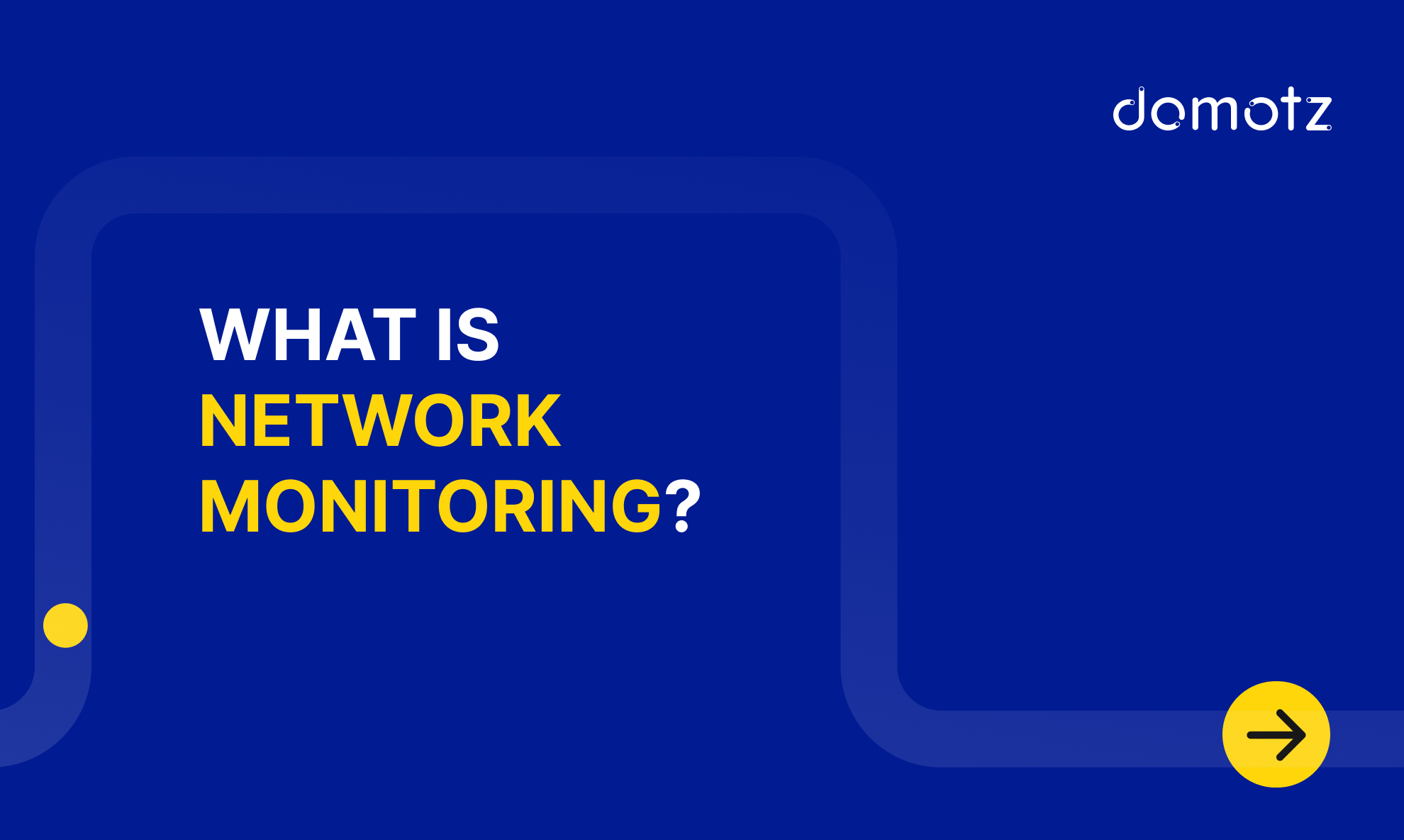The Internet of Things (IoT) continues to solidify its position as one of the defining technologies of our time.
IoT is any ethernet or WiFi network connected system and refers to the billions of physical devices around the world that are now connected to the internet, all collecting and sharing data.
Large enterprises have traditionally been the early adopters of IoT solutions. However, the explosive growth in IoT applications and connected devices in recent years has also enabled the development of solutions for small and medium businesses (SMBs).
The adoption of IoT services among MSPs is growing, especially amongst their SMB customers. In other words, MSPs will play an important role in helping enterprises adopt innovative technologies so they can respond more effectively to future challenges, instability, and emergencies.
Let’s have a look at the major IoT trends that could drive MSP business strategies in 2021.
1) There will be a wave of post COVID-19 changes for MSPs in terms of IoT
The COVID-19 pandemic is changing the face of IoT. Despite the decline in global GDP in 2020, IoT trends remained strong and the majority of IoT 2020 projects continued.
Research from the World Economic Forum in collaboration with Global Internet of Things and PwC states that:
“The IoT market is expected to grow even faster than expected once the world enters a new post-COVID-19 business environment, thanks to the release of pent-up demand and new investment in technology to minimize impacts from future disruptions, especially in the enterprise and public spaces domains.”
The figure you see below from this research shows the IoT connections growth rate pre and during the pandemic. It also highlights market growth estimates and expectations for the future.

“Figure 1: IoT connections growth” from the research State of the Connected World 2020 Edition written by the World Economic Forum in collaboration with Global Internet of Things and PwC, is licensed under CC BY-NC-ND 4.0.
As IoT implementations rise, more people will be looking for MSP expertise to help with their technology. Another interesting thing to think about is how Working from Home impacts the number of IoT solutions people are using.
IoT can offer significant benefits to home offices.
Here are some examples of how IoT solutions can help those working from home:
- Remote access to office facilities
Businesses can now use Bluetooth, WiFi and other networking technologies to allow interaction between employees in different locations. As a result, using remote client apps, employees can access office servers and data easily and securely from anywhere.
- IoT remote collaboration
IoT conferencing equipment is also facilitating smooth collaboration between remote employees. A smart camera, powered by a speech recognition engine, an interactive whiteboard to live-edit the content from the participants, are just some of the tools improving remote employee collaboration and productivity.
- IoT skill development and training
IoT technologies allow businesses to deliver educational content and skills-based training to remote workforces. There are plenty of tools that help your remote employees to complete complex tasks easily and accurately. As a result, they have more time to focus on things that matter most to your business.
- Increased use of MSP services for residential technology
Could offering residential managed services open up a profitable new opportunity for MSPs? MSPs have typically always steered clear of supporting residential customers.
What is different about residential markets now is that there are more people working from home and spending more time at home in general. Many more people are now purchasing personal IoT devices. The growing number of people relying on their home network for work offers a new and revitalized opportunity for MSPs to offer support to home networks. At the same time, more home users are willing to spend more to have their home technology reliable and secure, which creates a new opportunity for MSPs to offer their services.
MSPs wishing to provide services to residential users may benefit from using technology that enables the provision of remote monitoring, troubleshooting and support, such as Domotz.
2) More MSPs will start embracing the IoT opportunity
IoT Analytics research estimates that there are now 21.7 billion active connected devices worldwide, 54% of these are IoT device connections. As this number continues to grow, more companies will be looking to MSPs for their expertise in IoT technologies and infrastructure.
How MSPs can add value to their services in terms of IoT?
 Embrace new IoT opportunities
Embrace new IoT opportunities
MSPs should recognize some low-hanging fruit as a huge opportunity to offer new services. Some examples include remote camera monitoring, unified communications monitoring, and IoT devices relevant for MSPs to monitor.

Prevent issues
IoT could play an important role for some industries during the pandemic. Restaurants, bars or other foodservice providers often recognize the need of adopting new IoT solutions for their new business models. They could rely on IoT solutions for the take-out orders or to monitor remotely the temperature sensors of their equipment to prevent food waste.

Optimize processes
Using IoT devices, built-in sensors, and web integrations, can reduce operating costs and save time. IoT devices can help optimize simple processes, such as automatically ordering printer ink when it is running low, which frees up mental space and time to manage other tasks.
3) More MSPs are going to be focusing on Automation to cut costs and work smarter
The industrial IoT market is expected to grow with 16.7% to reach $263.4 billion by 2027, driven by applications such as industrial automation and predictive maintenance.
MSPs can take advantage of IoT as an emerging differentiator with the potential to drive more revenue for the channel.
To sum up, implementing IoT solutions gives MSPs and their clients the opportunity to collect more valuable data which can help them become more efficient. In other words, implementing automation to analyze this data, can help MSPs cut overhead costs, be more timely in resolving issues and also help with proactive management of a network’s infrastructure.
Here’s some easy ways MSPs can start to implement automation:
- Choose the right functions to automate. Identify internal processes that are repetitive by nature such as reporting and ticketing, software updates, and regular backups.
- Implement a professional services automation (PSA) tool to allow your clients to monitor, manage, track and resolve issues with their network and devices.
- Adopt a proactive network monitoring system like Domotz which integrates with the major PSA platforms to offer even greater automation, including immediate generation of tickets when alerts are detected. Domotz allows you to automatically perform a variety of diagnostic and preventive maintenance routines for your clients to identify potential difficulties before they become major problems.
4) Advanced data analytics and business intelligence will be an important IoT trend for MSPs
Given the growing number of implemented IoT solutions, organizations are no longer satisfied with simply storing data. Most importantly, they are looking to examine this data, so they are well equipped with the knowledge needed to make effective business decisions with confidence. Companies require IT solutions capable of handling specific big data models and queries because they want to know what is going on in their IT environments.
IoT data analytics and business intelligence solutions enable users to convert data collected from the devices they monitor into valuable knowledge. What makes an IoT data solution desirable to customers, is its ability to drill down into data automatically. Thus, more MSPs are looking at ways to implement big data and analytics solutions but are not sure where to start.
How MSPs can get started with data analytics and business intelligence?
- Define and track desired end states.
MSPs should help their clients define the right goals by helping sort, structure, and deliver collected data to potential users of the information.
- Provide expertise.
Data analytics and business intelligence solutions can bring value in decision-making but often lack real-time capabilities. Organizations demand a new type of partner which has expertise with technology and management skills. MSPs have great experience working with a wide variety of clients in different sectors. This exposure enables them to gain insights into potential challenges and solutions so they can contribute as a business consultant for their clients.
- Choose the right tool to start with.
There are many tools to meet the evolving need of companies to analyze data. For instance, with Domotz network management software, users can generate customized reports using Microsoft Power BI. This software allows users to sort and clean data to create well-designed models and charts. In addition, Power BI allows them to present the information in a customized dashboard, reports, or detailed analyses depending on specific users’ needs. Reports can include speed tests, round trip delay information, the status of networks and devices over time, and SNMP sensors charts. With Power BI you can transform and clean the data into a data model and create charts or graphs to provide visuals of the data.
Finally, no matter the line of business, driving valuable insights from the collected data, helps companies achieve better outcomes from their connected devices and projects and therefore the role of MSPs to help organizations optimize business intelligence.
5) IoT will have a big influence on an MSPs security offer
Security concerns are one of the biggest inhibitors to embracing IoT. This is because the number of cybersecurity attacks is constantly growing. In addition, cybersecurity threats are more common among the MSPs developing and using IoT solutions.
In short, this means that the more IoT solutions, the higher the probability of cyberattacks will be.
This trend makes safety and security for enterprise IoT applications a critical and ongoing issue.
But why do cybercriminals view MSPs as a good potential target in the first place? The answer is simple – MSPs handle large amounts of sensitive data. MSPs should remember that IoT devices are vulnerable to security issues because they automatically transmit data across the network. In other words, IoT devices require special security precautions. They are interacting with a largely unsecured external network which leaves them more vulnerable to cyberattacks.
Here are some of the top ways MSPs can make sure their IoT applications are secure:
- Be aware of the rising number of security breaches and ransomware attacks that could add complexity and cost to your MSP offerings. Here are some tips to increase cybersecurity effectiveness.
- Offer cybersecurity training for your clients.
- Partner with a managed security service provider (MSSPs) to expand your offerings.
- Use additional tools for identifying cyber risks and threats. For example, Domotz can help with alerting MSPs about physical cyber threats when new devices join the network.
- Follow the top cybersecurity experts for up-to-date advice and notifications about emerging security threats, breaches, and other news so your MSP remains vigilant and alert.
Further reading:
- MSP RMM – How to choose the right RMM for your business
- MSP Industry Trends from cloud computing to thermal cameras
- Automated network mapping tools – which one to choose?
- Server room temperature monitoring with SNMP sensors
- What is SNMP and how does SNMP work
Image sources:
- Illustration from Pixabay



